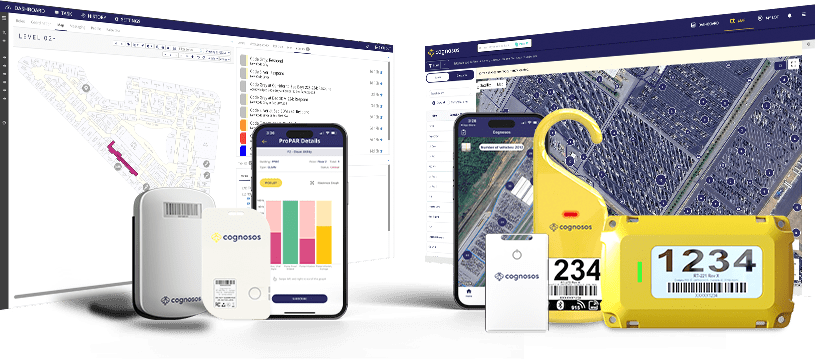Healthcare workplace violence is becoming a serious problem that hospitals can no longer ignore. Recent survey data shows that 81.6% of nurses experienced workplace violence, while 91% of emergency physicians report being victims of violence in recent years. These incidents go well beyond verbal abuse — staff are being physically attacked but traditional safety measures are failing to protect them.
The consequences are significant. Almost 60% of nurses left, changed jobs, or considered leaving a job due to workplace violence, which creates real challenges for hospitals trying to recruit and retain quality staff. Facilities that invest in comprehensive safety programs are finding they have a competitive advantage in hiring.
The true scope of workplace violence in healthcare
The problem of workplace violence is likely even more significant than the metrics reveal. A recent Cognosos survey of senior staff at more than 100 hospitals shows that workplace violence incidents are likely underreported across healthcare facilities: Almost 22% of those surveyed said that abusive or violent behavior was an expected part of the job, and 16.5% say that violence is underreported due to lack of confidence in follow-up and outcomes.
Findings also show that employee confidence is low —in both current safety measures and whether the organization will take workplace violence seriously enough to respond effectively.
When staff don’t believe that reporting an incident will lead to meaningful action, they simply stop reporting. This creates a cycle where incidents go undocumented, problems don’t get addressed, and staff confidence continues to decline.
Who’s behind the violence
Cognosos survey data shows that visitors are the most common perpetrators of healthcare workplace violence, followed by patients, with staff-on-staff incidents being less frequent. This means hospitals need to be prepared for unpredictable violence from people who may be emotionally distressed or unfamiliar with hospital environments.
Even with the fastest response systems, staff typically face several seconds of managing aggressive situations on their own. During these moments, de-escalation skills are crucial — which means training is key — but staff also need to have confidence that help is coming.
The problem with traditional panic buttons
Fixed panic buttons — whether above a patient bed or under a desk — are the most common safety solution in hospitals today, but they have serious limitations that become apparent during emergencies. Staff don’t always have easy access to them, especially if an aggressor is between them and the button location. Even if a panic button is accessible, the risk for escalation is real if an aggressor sees that help is being called.
Hospital staff consistently point to partial coverage as their biggest complaint. Many systems only work inside hospital buildings, leaving staff particularly vulnerable outdoors, on walkways, or in parking areas, especially at night.
Essential features to track staff in real-time
Hospitals are beginning to look to real-time location systems (RTLS) as key components of their workplace violence prevention plans. And while many vendors offer wearable staff duress badges that incorporate panic buttons, specific features are key to truly protect staff in vulnerable moments.
When vetting staff duress solutions for your organization, look for these key features:
- Discreet activation: A staff duress badge should blend in with standard hospital ID badges, should be easy to activate without looking, and have hidden panic button placement to avoid escalation. It should also include features that prevent accidental activation.
- Full campus coverage: Protection needs to work everywhere — inside buildings, in parking areas, and on outdoor walkways — in real time. Monitoring should continue until an incident is resolved.
- Accurate location tracking: Responders need to know exactly where the incident is happening so they can get there quickly and efficiently and be able to track staff if the incident location changes.
- Fast local response: Instead of waiting for security to arrive from across the facility, systems should alert nearby staff who can respond more quickly.
- Reliable communication and feedback: Alert transmission should be immediate through a dedicated low-latency network, avoiding delays from hospital Wi-Fi.
- Hygiene and durability: Badges should be designed to prevent dirt accumulation and be easy to clean for infection control.
Benefits beyond improved safety
Hospitals investing in advanced workplace violence prevention solutions see multiple benefits beyond just improved safety. Almost 40% of survey respondents believe that staff safety improvements would increase employees’ satisfaction and sense of security, which creates competitive advantages in recruitment and retention.
These systems also support regulatory compliance with Joint Commission workplace violence prevention standards and OSHA guidelines, while providing better incident documentation for analysis and improvement.
Faster response times, reduced liability exposure, and measurable outcomes help justify program investments while building ongoing staff confidence.
Reduce workplace violence, rebuild trust
With employee confidence in safety systems at an extremely low level, this lack of trust undermines every safety initiative, whether it’s training programs or new technology.
Hospital leaders need to shift their thinking from the idea that workplace violence is just part of working in healthcare. This requires comprehensive strategies that combine technology, training, and clear policies. De-escalation training remains important, but it needs to be supported by reliable technology that gives staff confidence during those first critical moments of any incident.
How Cognosos Safety solves these problems
Cognosos Safety was designed specifically to address the most vexing challenges that hospitals face when trying to keep staff safe. Our wearable badge has a panic button on the back that lets staff call for help discreetly, without escalating situations or alerting aggressive individuals.
LocationAI technology provides room-level accuracy, but perhaps more importantly, offers coverage throughout the entire campus, including parking lots and outdoor areas. Alerts are transmitted through a dedicated low-latency network to ensure they reach responders immediately, and a quiet vibration on the badge itself tells staff their alert was received.
The system automatically notifies the closest responders and provides continuous location updates throughout the incident. It integrates with existing Code Gray and security systems for coordinated response, while built-in reporting supports compliance and helps improve processes over time.
Rebuild staff trust in your organization. Learn how Cognosos Safety can keep your hospital’s staff safe across the entire hospital campus. Get in touch to learn more.



